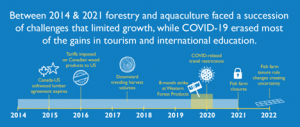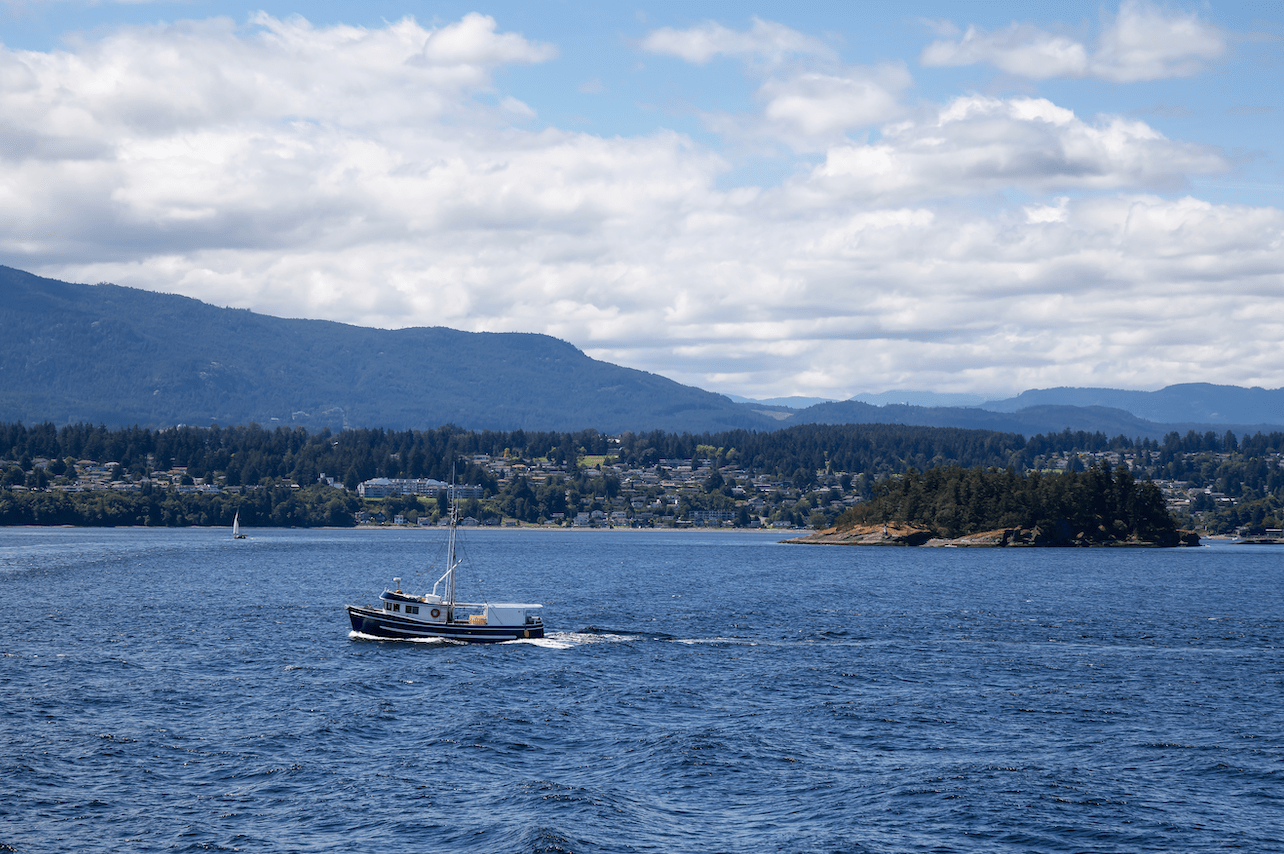
VANCOUVER ISLAND – VI Trendlines is a six-part series on the State of the Island Economic Report prepared by MNP and published annually by the Vancouver Island Economic Alliance.
TOURISM – Favourable exchange rates and strong global economic conditions resulted in the addition of 4,000 jobs in tourism related sectors (e.g., hospitality, recreation) between 2014 and 2019.1 Travel restrictions to curb the spread of COVID-19 led to significant reductions in the number of visitors to Vancouver Island, and by the end of 2021 employment in tourism related sectors had fallen by over 3,000.
FORESTRY – Fibre supply constraints have reduced annual harvest volumes on Vancouver Island by approximately 10 percent since 2014 and resulted in the closure of one large mill and several small operations.
The forest sector has also faced a number of other challenges. Expiry of the softwood lumber agreement between Canada and US in October 2015 resulted in the imposition of tariffs on imports of Canadian wood products the following year. There was also an eight-month strike at Western Forest Products that shutdown production. The strike ended in February 2020 and the introduction of COVID-19 restrictions delayed the restart of production by several months.
The net result has been a decline in employment in harvesting and manufacturing on Vancouver Island of approximately 2,900 between 2014 and 2021.2
AQUACULTURE – Aquaculture production on Vancouver Island was relatively stable between 2014 and 2021. However, the closure of fish farms in the Broughton Archipelago in 2021 have resulted in reductions in employment and changes to the tenure rules that are expected to come into effect in June 2022 may lead to the closure of processing facilities.
INTERNATIONAL EDUCATION – Between 2014 and 2019 the number of international students studying on Vancouver Island was relatively stable with modest year-to-year fluctuations. Classes were delivered virtually between April 2020 and August 2021 which meant that many international students remained in their home countries. The result was a reduction in economic spin-offs associated with spending by students.
OTHER – There were modest increases in manufacturing related to food and beverages and transportation equipment. Tech and film production also showed signs of increased activity between 2018 and 2021.
1Statistics Canada, Labour Force Survey, Custom Tabulation
2Ibid

